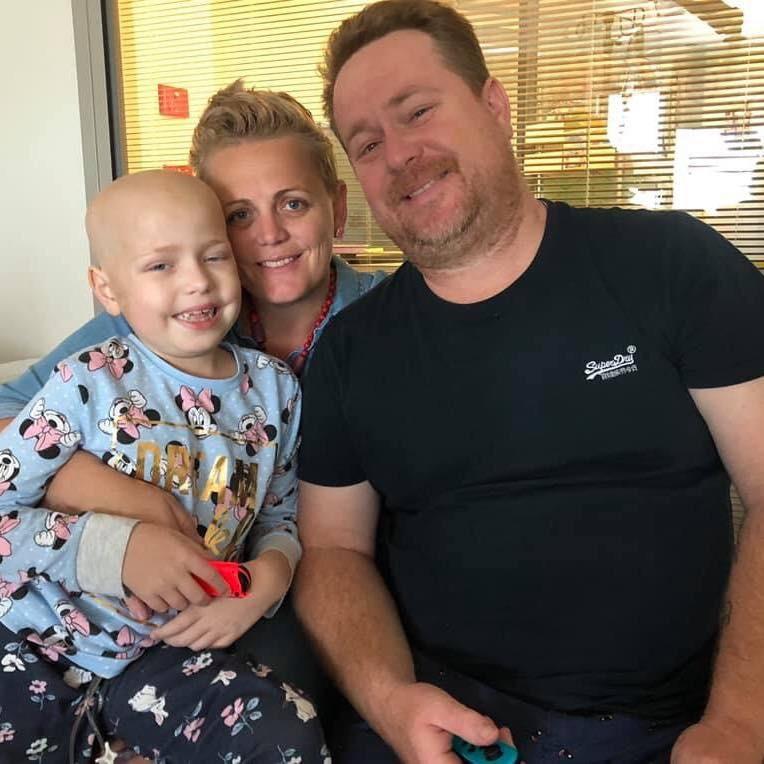Overview of lymphoma in children
Lymphoma is the 3rd most common cancer in Australian children and young people aged 0 – 14 years. The two most common cancers in children being leukaemia and brain or central nervous system (CNS) cancer. Lymphoma is considered a rare childhood condition affecting around 100 Australian children a year. With current standard first-line treatments, many lymphomas in children are very curable.
Lymphomas are a group of cancers of the lymphatic system. They develop when lymphocytes, which are a type of white blood cell, gain DNA mutations which lead them to divide and grow uncontrollably, resulting in lymphoma. There are two main types of lymphoma, Hodgkin lymphoma and non-Hodgkin lymphoma (NHL).
Lymphoma can be further divided into:
- Indolent (slow growing) lymphoma
- Aggressive (fast-growing) lymphoma
- B-cell lymphoma develop from abnormal B-cell lymphocytes & are the most common, accounting for around 85% of all lymphomas (all ages)
- T-cell lymphoma develop from abnormal T-cell lymphocytes and account for around 15% of all lymphomas (all ages)

What is the cause
In most cases of lymphoma, the cause is not known. There is nothing that you have done or haven’t done that has caused this for your child. It is not infectious and cannot be passed onto other people. What we do know is that special proteins or genes are damaged (become mutated) and then grow uncontrollably.
Types of childhood lymphoma
There are two main types of lymphoma, Hodgkin lymphoma and non-Hodgkin lymphoma (NHL).
Hodgkin lymphoma (HL) is an aggressive B-cell lymphoma. It accounts for around 7% of all childhood cancers (0-14 years) and around 40% of all lymphomas for this age group. Hodgkin lymphoma affects around 30 Australian children each year. Hodgkin lymphoma is rare under the age of 5 years. HL becomes most common in adolescents and young adults. HL can affect people of all ages.
There are two main types of Hodgkin lymphoma (HL) that include:
- Classical Hodgkin lymphoma: the more common subtype of Hodgkin lymphoma and is characterised by the presence of large, abnormal Reed-Sternberg cells.
- Nodular lymphocyte predominant Hodgkin lymphoma: which involves variants of Reed-Sternberg cells called ‘popcorn’ cells.
Non-Hodgkin lymphoma (NHL) can be either aggressive (fast growing) or indolent (slow growing) in behaviour. They can be either a B-cell lymphoma or T-cell lymphoma. NHL affects around 40 Australian children each year. NHL is also more common in boys than in girls. Most NHL increases in incidence with age.
There are many different types of non-Hodgkin lymphoma, but only 4 most commonly seen in children:
- Paediatric diffuse large B-cell lymphoma – comprising approximately 15% of childhood NHL
- Paediatric Burkitt’s lymphoma – accounting for roughly 40% of childhood NHL
- Paediatric lymphoblastic lymphoma – around 25% – 30% of childhood NHL
- Paediatric anaplastic large cell lymphoma – making up around 10% – 15% of childhood NHL
For more information about diagnosis, treatment and follow-up care for the subtype of lymphoma that is relevant to you, click on the following pages:
- Hodgkin lymphoma
- Lymphoblastic lymphoma
- Burkitt lymphoma
- Diffuse large B-cell lymphoma
- Anaplastic large cell lymphoma
Prognosis of childhood lymphoma
Lymphoma in children can be very curable with standard first-line treatment that includes chemotherapy.
- Hodgkin lymphoma – Both classical and nodular lymphocyte predominant Hodgkin lymphoma are highly curable, with survival rates over 90%.
- Paediatric diffuse large B-cell lymphoma – 90% event free survival rate
- Paediatric Burkitt’s lymphoma – 90% cure rate
- Paediatric lymphoblastic lymphoma – 85% cure
- Paediatric anaplastic large cell lymphoma – The long-term survival rate for limited (early stage) anaplastic large cell lymphoma is between 80% – 90%. The long-term survival for advanced (stage III and IV) anaplastic large cell lymphoma is about 60% – 75%.
Long-term survival and treatment options depend on a range of factors, including:
- Age of the child at diagnosis
- Stage of the lymphoma (how advanced or widespread)
- Type of lymphoma
- How the lymphoma responds to treatment
Treatment for lymphoma
The treatment for lymphoma in children is chemotherapy (often including immunotherapy) and sometimes radiation therapy too. Depending on the type of lymphoma, different chemotherapy agents are used for different types of lymphoma.
The doctors will take into consideration many factors about the lymphoma and general health of your child to decide when and what treatment is required. This is based on:
- The stage of the lymphoma
- Symptoms at diagnosis
- Past medical history
- General health
- Current physical and mental wellbeing
- Your preferences
Information and supports for parents and caregivers
If you are a parent or carer of a child who has been diagnosed with lymphoma, it can be a stressful and emotional experience. There is no right or wrong reaction.
Therefore, it is important to allow yourself and your family time to process and acknowledge the diagnosis. It is also important that you do not carry the weight of this diagnosis on your own as there are a number of support organisations that are here to help you and your family during this time.
